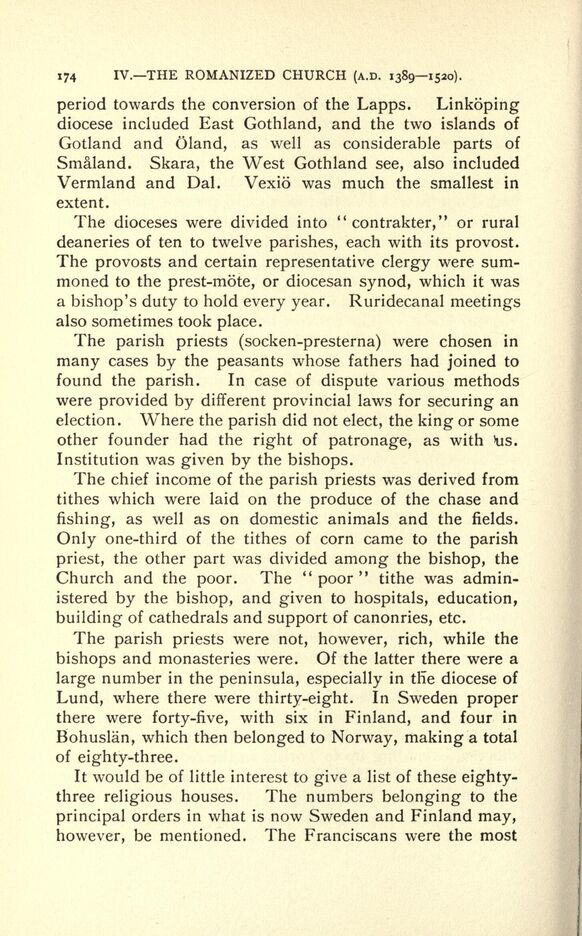
Full resolution (JPEG) - On this page / på denna sida - IV. The Romanized Church under the Union Sovereigns (1389—1520 A.D.)

<< prev. page << föreg. sida << >> nästa sida >> next page >>
Below is the raw OCR text
from the above scanned image.
Do you see an error? Proofread the page now!
Här nedan syns maskintolkade texten från faksimilbilden ovan.
Ser du något fel? Korrekturläs sidan nu!
This page has never been proofread. / Denna sida har aldrig korrekturlästs.
174 IV. THE ROMANIZED CHURCH (A.D. 13891520).
period towards the conversion of the Lapps. Linkoping
diocese included East Gothland, and the two islands of
Gotland and Gland, as well as considerable parts of
Smaland. Skara, the West Gothland see, also included
Vermland and Dal. Vexio was much the smallest in
extent.
The dioceses were divided into
"
contrakter," or rural
deaneries of ten to twelve parishes, each with its provost.
The provosts and certain representative clergy were sum
moned to the prest-mote, or diocesan synod, which it was
a bishop s duty to hold every year. Ruridecanal meetings
also sometimes took place.
The parish priests (socken-presterna) were chosen in
many cases by the peasants whose fathers had joined to
found the parish. In case of dispute various methods
were provided by different provincial laws for securing an
election. Where the parish did not elect, the king or some
other founder had the right of patronage, as with *us.
Institution was given by the bishops.
The chief income of the parish priests was derived from
tithes which were laid on the produce of the chase and
fishing, as well as on domestic animals and the fields.
Only one-third of the tithes of corn came to the parish
priest, the other part was divided among the bishop, the
Church and the poor. The "
poor
"
tithe was admin
istered by the bishop, and given to hospitals, education,
building of cathedrals and support of canonries, etc.
The parish priests were not, however, rich, while the
bishops and monasteries were. Of the latter there were a
large number in the peninsula, especially in trie diocese of
Lund, where there were thirty-eight. In Sweden proper
there were forty-five, with six in Finland, and four in
Bohuslan, which then belonged to Norway, making a total
of eighty-three.
It would be of little interest to give a list of these eighty-
three religious houses. The numbers belonging to the
principal orders in what is now Sweden and Finland may,
however, be mentioned. The Franciscans were the most
<< prev. page << föreg. sida << >> nästa sida >> next page >>